
17 Ways to Design a Covid-Safe Restaurant
What makes a restaurant a safe and successful space for diners and staff? We spoke with an architect, a restaurateur, and a hotelier to find out.

While we wait for an effective COVID vaccine, restaurant design is being reimagined by restaurateurs, designers, and chefs trying to arrive at a sustainable and safe model. While some restaurants have pivoted to a combination takeout/market model with makeshift patio dining and many have sadly closed, many questions remain for the restaurants that will still exist once we’re past the crisis: Will we return to the thrum of intimate spaces, crowded bars, and diners enjoying food and each other’s company elbow to elbow? Does the crisis mark the death of common tables and the attendant shared plates? Is increased patio dining going to be a best practice for restaurants who might need to weather new strains of the virus? Or will we land somewhere in between? Just as modern commercial and residential architecture mimicked the glass walls, abundant light, and wide-open spaces of hospital design in the wake of the Spanish flu, restaurant design will undoubtedly change—but just how much remains to be seen.
Alexis Readinger, Architect and Founder of Preen Inc., Los Angeles
Readinger is a 20-year veteran of the L.A. restaurant industry, with projects including Yapa, Howlin Ray’s, Hatfield’s, Sweet Lady Jane, Akasha, and Umami Burger. She’s a LEED certified green building designer and on the board of the Chinatown Business Improvement District.
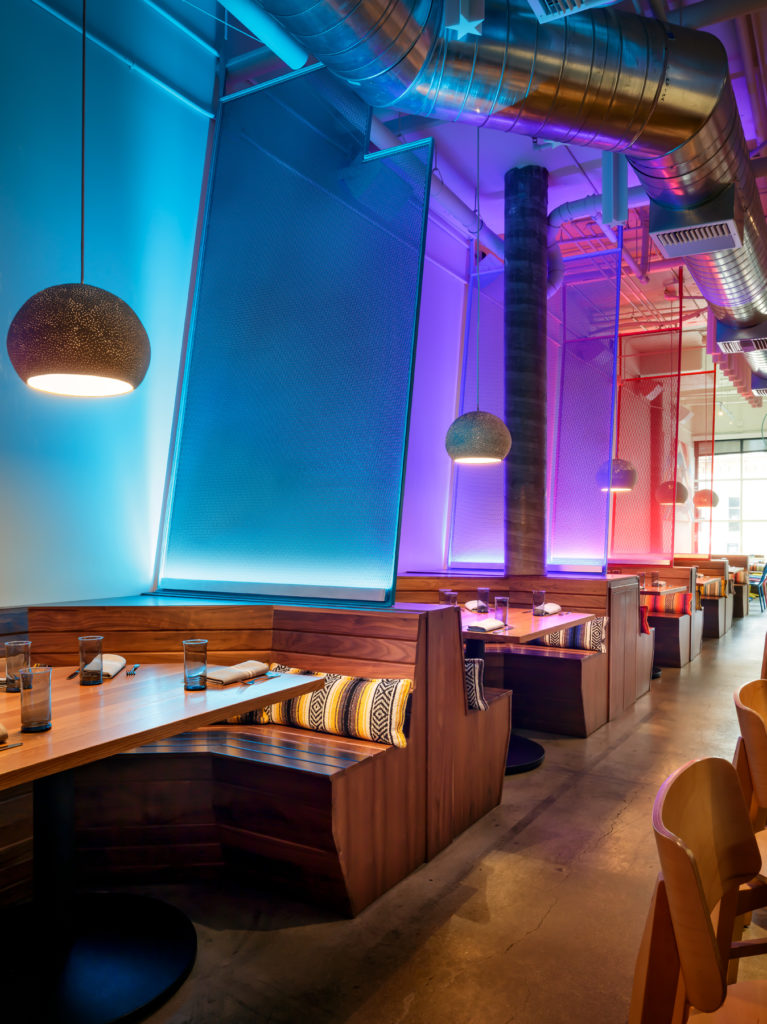
Brandon Barre
The Table Takes Center Stage
“Aside from issues of hygiene and reduced capacity and revenue, the biggest issue facing us with COVID design is a challenge to the dynamic energy of a restaurant. The last ten years have all been about a hyperexpanded access to chefs, to the kitchen, the real source of a restaurant’s energy. The other source for dynamics is people. As we cut back on interaction with these agents, we are almost back in a fine dining model, whereby the energy is generated from the intimacy of your own table.”
“For a restaurant that has ample room and can space everyone out, the opportunity is to create warmth and connection within the originating intention of the brand. This can be accomplished by marking tables as points in space, whereby each table is a star in the realm of the restaurant universe. That could look like hanging art over each table, or pools of colored light, anything to specialize the dining experience at the table. These moves should reflect the idea of the place.”
“As we continue in the rolling waves of COVID spikes, while cloud kitchens gear up and more people find chef-curated takeaway, diners will continue to seek out restaurants for the experience. Restaurant design may evolve to be more immersive and more intelligent to the nature of the establishment.”
The Return of Main Street
“One of the most interesting things that is emerging from the COVID response is the refashioning of city streets into deep sidewalk and plaza dining. We’ve been working with various cities to expand our al fresco dining options and they have the potential to brighten and soften the city with vibrant outdoor and pedestrian activity.”
“In Culver City, we are re-taking Main Street and are designing a streetscape extension for Piccalilli. Piccalilli opened last January, right before COVID. The original design for the restaurant was conceived of as a waypoint in an apocalyptic future, a beacon for all, whereby two lovers would hope to meet when all else had failed. The design is a fantastical fusion of pop, innocence, and shadow; the pop represented in part by les animaux, our colored animal forms, and the darkness carried through by architectural blacklight that casts both gray and lavender shadow.”
“By some bizarre twist of events, here we are in the future of our now. Piccalilli is the neighborhood beacon at the intersection of Main and Culver, a place where two lovers may now go to meet. Beyond the immediate need for lighting and shade in the street, the design challenge is to carry through a real sense of intimacy and brand. We are starting with temporary barriers and rolling gardens for enclave and we are introducing life-scale fantastical animaux for the street patio to continue the brand narrative and to create a sense of place.”
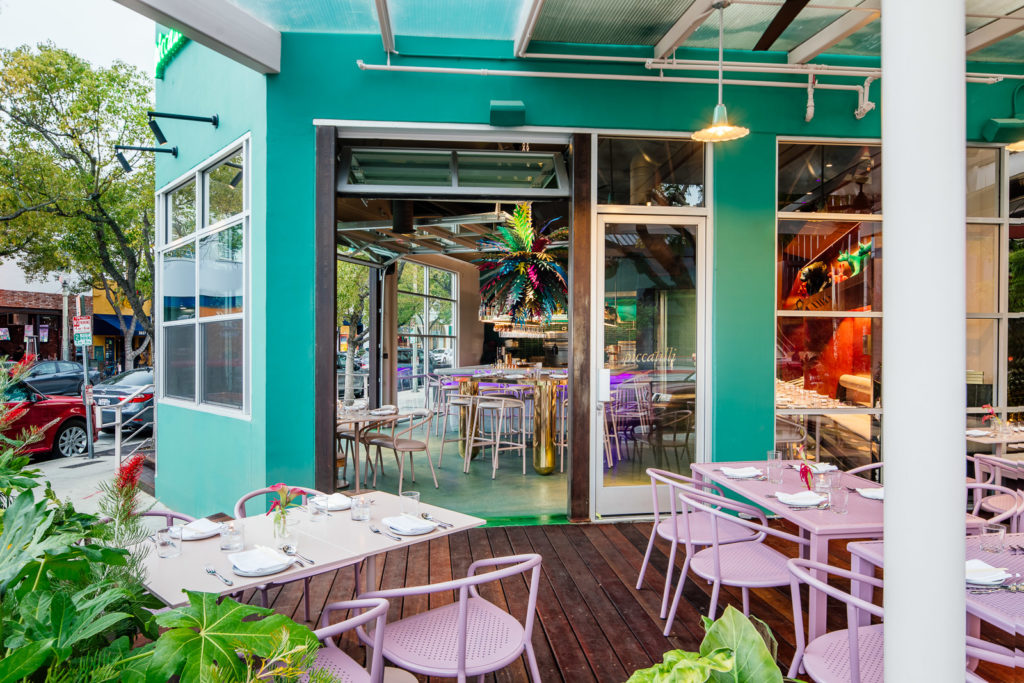
Tanveer Badal
The End of the Host Stand
“The host stand was already a thing of the past to some degree. It has shifted into a floating POS terminal and a greeting and that is still needed. One thing I find interesting is the barcode menu, which allows you to essentially touch nothing except your phone to view the menu. It also cuts down on paper, printing and waste.”
Improved Ventilation
“I was recently on a panel for Life & Thyme with Simon Kim of Cote in New York. His Michelin starred restaurant has air intakes at each table for Korean BBQ so the airflow in his restaurant is proposed to be six times that of a regular restaurant. We are currently working on a new concept for famed Brazilian chef Rodrigo Oliviera and we are taking into calculation the restaurant volume and air exchange. Restaurants with voluminous space have a high degree of air flow at reduced diner capacity.”
The Rise of the Groceraunt
“We’ve already seen the greenhouse model pop up and some of this will continue. As COVID continues, the required six-feet spacing is not tenable. Small restaurants will likely move from the boy in the bubble idea to a shifted typology of curated market and takeaway. A good portion of L.A. has discovered that they need not go to big box stores for sundries. Our chefs figured this out early on and we will continue to see a lot of models in which you can pop in to grab lunch for now and groceries for dinner for later.”
The Future Is Outside
“I’ve long heard complaints that L.A. does not have the outdoor f&b life that people want. We invented architecture that is about blurring the boundary of outdoor and indoor. We have the perfect climate for it. We are craving nature. Now is the time to re-envision the kinds of spaces we want our city to be made of. “
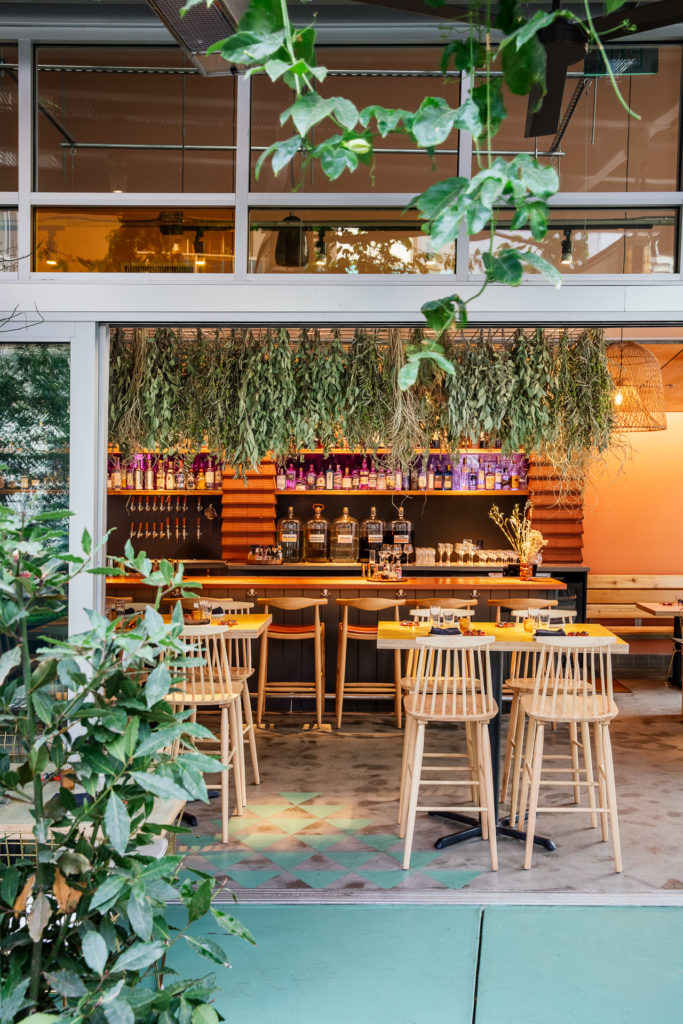
Tanveer Badal
Drive-Through Thriving
“I was recently impressed by a trip to Neptune’s Net. It has become a drive-thru and we were able to get oysters, king crab, peel-and-eat shrimp, and white wine to go, all delivered into the car as we were in line. The beaches of Malibu were packed and we ended up sitting in the dirt on the side of the PCH to eat. It appears to me that some sort of roadside, socially distanced rest stop for dining could be needed. But there is no COVID-proof environment. I read today that in first study, the antibodies do not appear to remain for a long period. This may be our new norm. The best we can do is to individually assess our level of risk, take precautions to protect ourselves and other people, and to move forward in the world.”
Steve Livigni, Food & Beverage Partner, Hotel June
Steve Livigni is a Los Angeles based restaurateur with multiple restaurant locations in both Los Angeles and Detroit. Last year, Livigni signed on as Food & Beverage partner at Brian DeLowe and Brad Korzen’s new Proper Hospitality brand, Hotel June, which just opened its doors in Playa Vista, CA. Livigni oversees two restaurant concepts there, Scenic Route and Caravan Swim Club, which pay homage to the many road trips of his childhood between the Central Coast of California and Ensenada, Mexico.

Dylan + Jeni
A Safer Host Station
“The host station is the hub of the restaurant. There needs to be a meeting place between managers, hosts, servers etc., and also a checkpoint for the guests. If the hosts are protected with masks and shields and the guests are respectful and also wear masks then it’s no different than any other allowable human contact.”
Distance Matters
“With the devastating impact COVID has had on the hospitality industry, not all restaurants will be able to afford all these barriers, but the key is to create even more distance between tables and very wide clear paths to the restrooms to add additional piece of mind when strangers are walking past.”
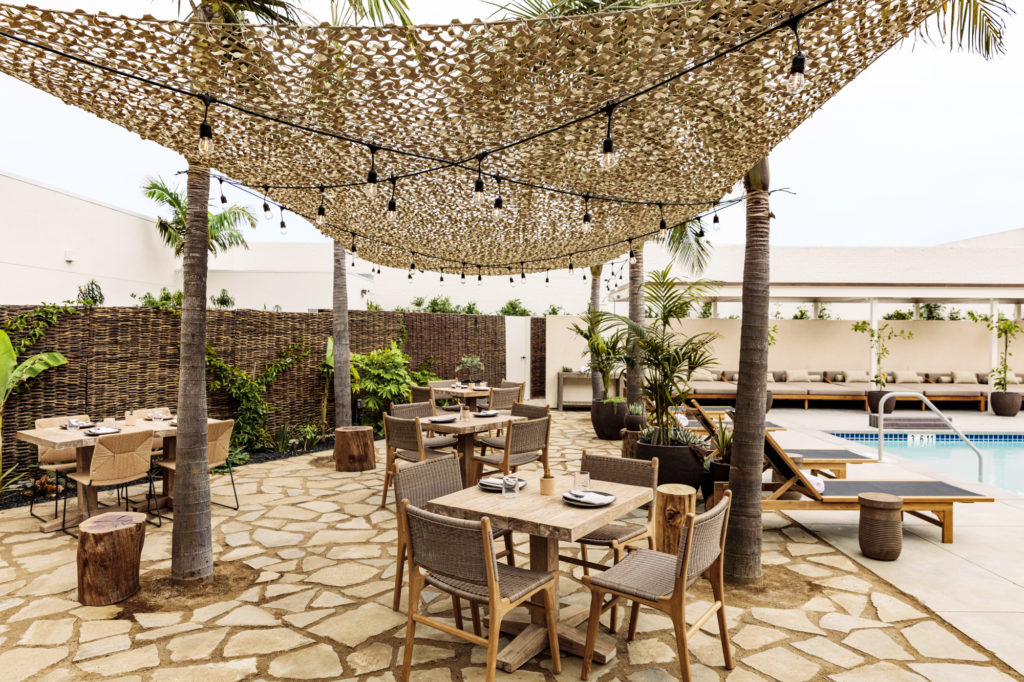
Dylan + Jeni
Increase the Square Footage
“If we continue on this path with COVID, new restaurants will need to be designed with more space and restaurant lease rates per sq/ft will need to get capped to afford restaurants the ability to dedicate more square footage to non-guest areas in the back of house. Additional ventilation spread across the kitchen will also help, and this is an area where the landlord should ensure adequate HVAC to even market their property for restaurant use.”
Mark Canlis, Co-Owner Canlis, Seattle
Canlis, along with his brother Brian, owns and operates the multiple James Beard Award-winning Seattle fine-dining institution Canlis. Since COVID hit, the restaurant has tested eight business models (including burger stand, bagel shop, and drive in movie theater) before arriving at its current concept: an open-air seafood restaurant called Canlis Crab Shack, which seats 95 guests in the former restaurant parking lot. Canlis is one of the lucky few restaurants to be thriving, and is paying its success forward: So far the restaurant has donated some $200,000 to local non profits.
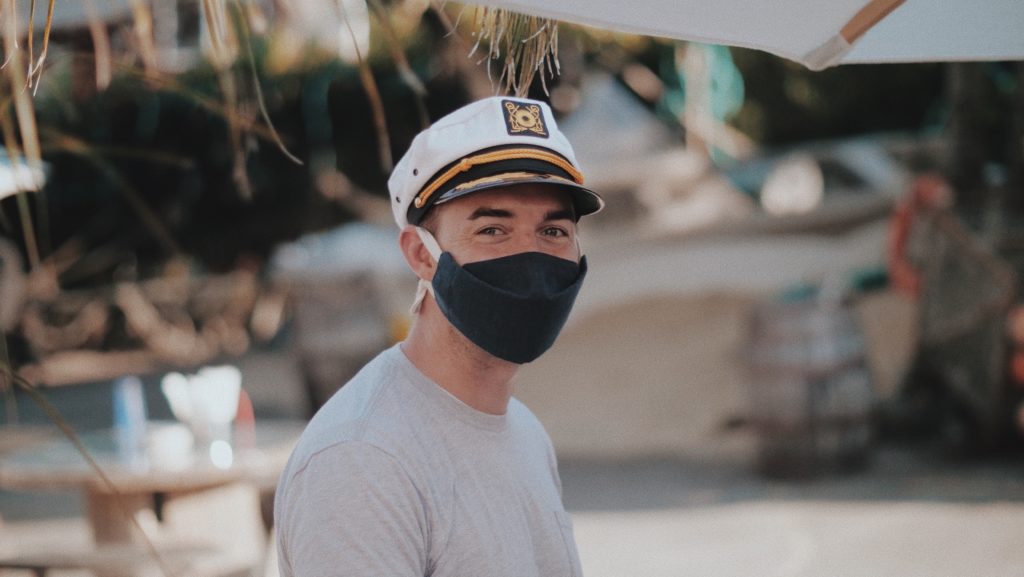
Jeremey Beasley
Keep It Casual
“With COVID all the principles of fine dining and service and hospitality are up for renegotiation. In the past diners would expect us to be incredibly attentive and now us checking on your table seems like an intrusion. After trying to prevent the need for people to snap their fingers and flag down a waiter we needed to figure out how to make a diner snap their fingers and say “garçon!” At the Crab Shack we’ve set up little flags on springs that pop up and let your server know you need them.”
Maximize the Space
“We’re lucky to have this massive parking lot with a ton of space, so we’re able to set the tables 10 feet apart. But the magic is that we built it to feel like a real dining room. There’s tons of space around the restrooms, the tables are really big.”
Create a Universe
“We got a 40-foot main sail from a sailboat that we’re using for shade. We’ve made it warm and inviting. We trucked in sand. At the entrance we have a lifeguard station and keep it goofy while keeping people safe. They check your temperature under an umbrella and tell you there’s no running around the pool and you need to keep your mask on when you leave your table. People are into it and in they’re happy to wear a mask! I’ve heard so many people say they’re here because of our intentionality in making it work.”

Jeremey Beasley
Keep It Clean
“We built all these tables out of wooden spools of nets and we covered them with see-through vinyl material. We do this major wash-down in between guests. There are hand sanitizer pumps mounted and drilled into the table so you can sanitize your hands at the table and not have to get up and go to the bathroom. There are no crevices, no napkins in containers. You’ve got all that fine-dining fastidiousness but in a a crab shack. It’s the same game, it just looks different”
Dive into the Details
“We typically think through more details in fine dining than in casual. The only thing that differentiates us from other restaurants is how much attention goes into the myriad details. For Canlis it took eleven attempts to make a box to serve one bite from an artist that lives five states away. And that was for just one moment in the meal. It always comes down to figuring out all the ways you can let the guest know that they can trust you. That’s always been the restaurant challenge.”
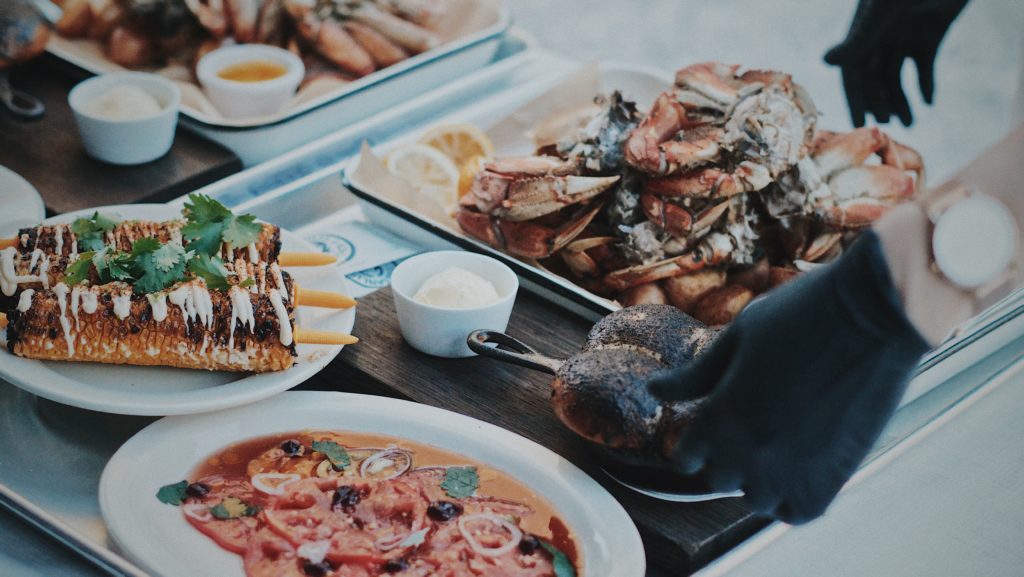
Jeremey Beasley
Focus on the Food
“It’s one set menu that we sell in advance. Everybody gets everything. Chef is figuring how can he can do a crab shack faithfully but deliciously. So you get a whole Dungeness crab boil, tomato salad, fresh cooked rolls, corn on the cob, smoked salmon dip and chips, fresh baked berry galette with whipped cream. It’s an on-the-nose themed crab shack. You can add a bucket of spot prawns, mussels, or a seafood tower. It’s starts at $69 a person. 14 bucks a cocktail. Six-buck beers.”

Jeremey Beasely
Lift Spirits
“From an emotional standpoint it’s such a pick-me-up. On the one side we’ve been doing all these things, but we’re doing us again. It feels like this small win, like we’re sticking it to the virus and we’re frigging opening a restaurant. There’s a feeling like we‘ve fought through and haven’t laid off a single person and we’re getting some slice of our normal lives when a lot of the headlines aren’t offering a lot of hope and victory. And the guests are feeling it. They have on their summer dresses and they’ve got the their summer vibe on. And for dinner they’ve got this little slice of victory and there’s an incredible feeling of resilience. You’re watching the continents move and wondering what the ocean is going to look like when this is done. But we need to remember a year is not long-term. As painful as the forced stillness and the loss of control is, I’m a firm believer in the human spirit and the need and willingness to endure. Now I’ve just to got to figure out what I’m doing this fall.”
